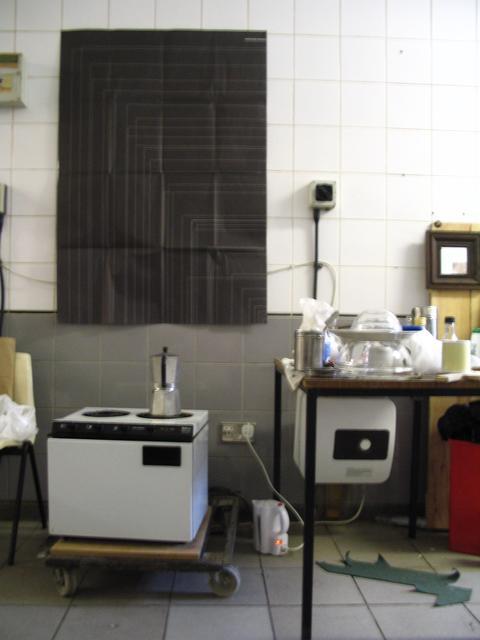paper standardization.
Voici my favourite poster, paper sizes in its bunkery home:

Designed by Sybille Stöckli it's a nice bedroom accompaniment to a certain chapter in Jan Tschichold's Die Neue Typographie. A brief history of paper standardization:
In the 19th and early 20th century the lack of paper standardization was conspicuous: the choice was made primarily on aesthetic grounds which lead to enormous amounts of printed matter.
1796 the German Lichtenberg recommended introduction of standardization, on the basis that formats should always be decided by successive halving of the original sheet size. (He wrote a good letter about it)
In the early years of French Revolution the principle was given partial recognition - authorities made a rule about formats of official documents and forms in mathematical terms: 1: 1.41 (which is linked with the metric system). By ordering the original size of sheets to be 1m2 and the proportion to be 1:1.41 they arrived at exactly the same scheme as today's A-series in DIN (Deutsche Industrie-Normen). However, the French attempts had no permanent result.
20th century research scientist Wilhelm Ostwald through Die Brucke (formed with K.W. Buhrer in 1912 in Munich) made new advances in regulating format size. Stemming from the Lichtenbergian principle of constant ratio, but measured in centimetres, the proposed "world-formats"(230x230 mm letterheads) was unpractical. Their work was interrupted by the war.
In 1922 Dr. Walter Porstmann at the German Standards Committee introduced metric-based DIN 476 paper standardization system. This replaced old "folio" system and "quarto format" and spread to many European countries before and during WWII. Now everyone uses ISO 216. (apart from the US, Canada, Mexico, Colombia, the Philippines and paper haters).

Designed by Sybille Stöckli it's a nice bedroom accompaniment to a certain chapter in Jan Tschichold's Die Neue Typographie. A brief history of paper standardization:
In the 19th and early 20th century the lack of paper standardization was conspicuous: the choice was made primarily on aesthetic grounds which lead to enormous amounts of printed matter.
1796 the German Lichtenberg recommended introduction of standardization, on the basis that formats should always be decided by successive halving of the original sheet size. (He wrote a good letter about it)
In the early years of French Revolution the principle was given partial recognition - authorities made a rule about formats of official documents and forms in mathematical terms: 1: 1.41 (which is linked with the metric system). By ordering the original size of sheets to be 1m2 and the proportion to be 1:1.41 they arrived at exactly the same scheme as today's A-series in DIN (Deutsche Industrie-Normen). However, the French attempts had no permanent result.
20th century research scientist Wilhelm Ostwald through Die Brucke (formed with K.W. Buhrer in 1912 in Munich) made new advances in regulating format size. Stemming from the Lichtenbergian principle of constant ratio, but measured in centimetres, the proposed "world-formats"(230x230 mm letterheads) was unpractical. Their work was interrupted by the war.
In 1922 Dr. Walter Porstmann at the German Standards Committee introduced metric-based DIN 476 paper standardization system. This replaced old "folio" system and "quarto format" and spread to many European countries before and during WWII. Now everyone uses ISO 216. (apart from the US, Canada, Mexico, Colombia, the Philippines and paper haters).
Labels: paper

1 Comments:
Three comments:
1. Where does A4, A3 etc come in?
2. ISO control out lives. If only we understood it, and exposed the biases inherent in its working...
3. I really NEED a two-ring stove like the one in the picture. Prefereable gas though
Post a Comment
<< Home